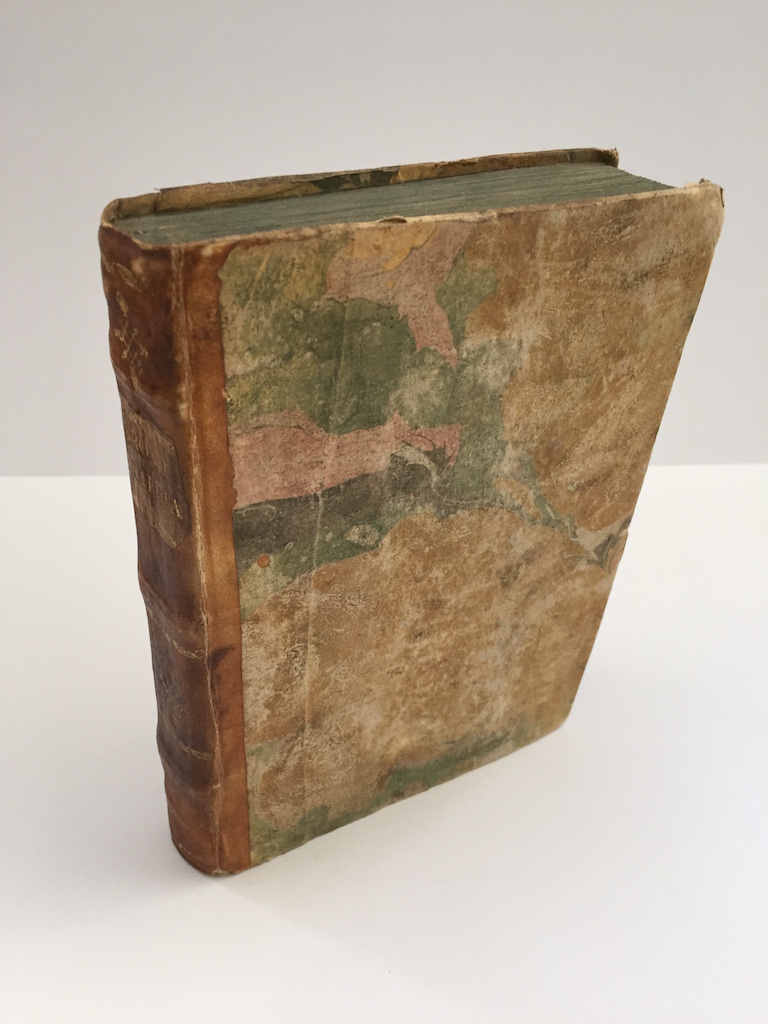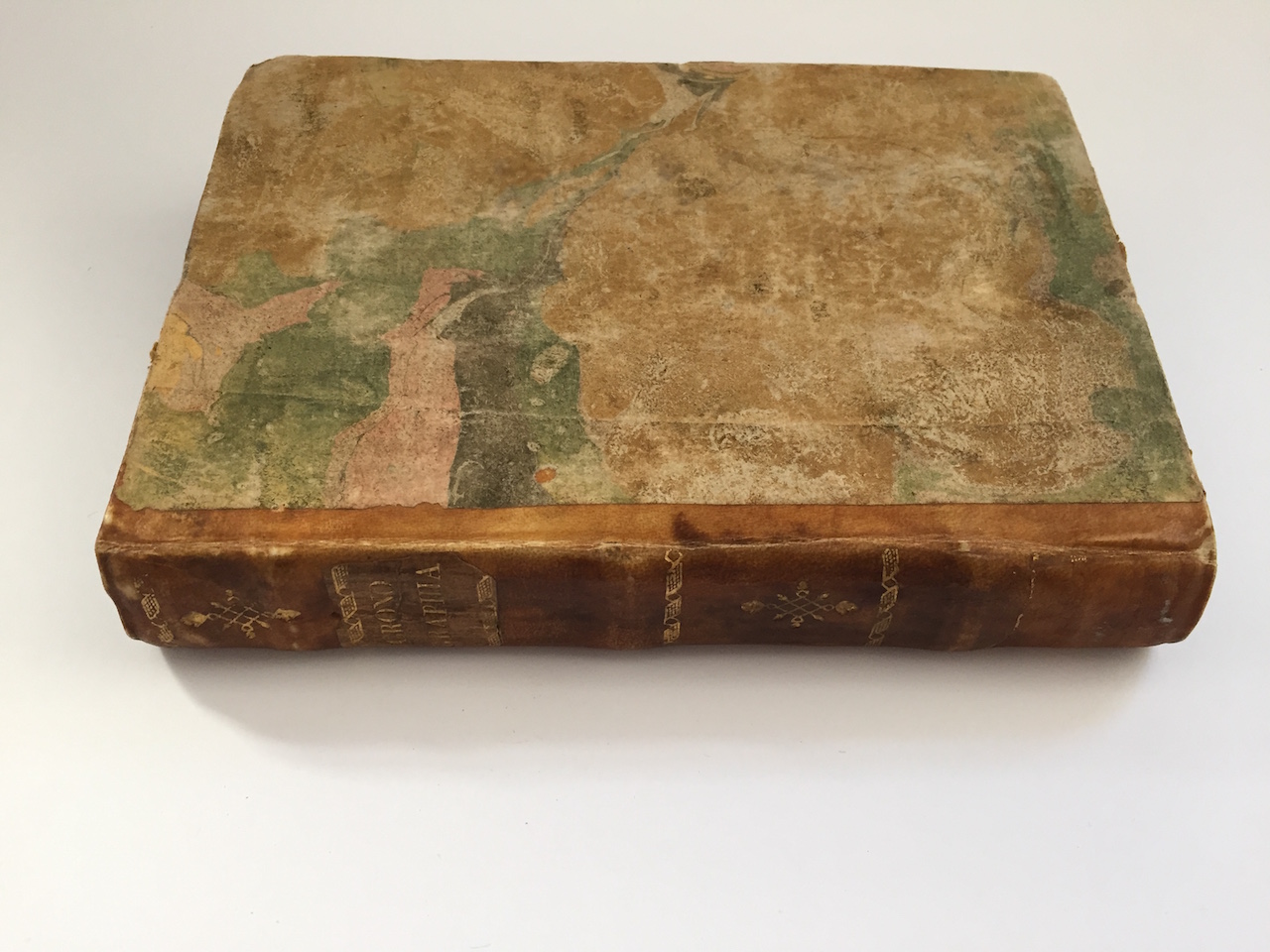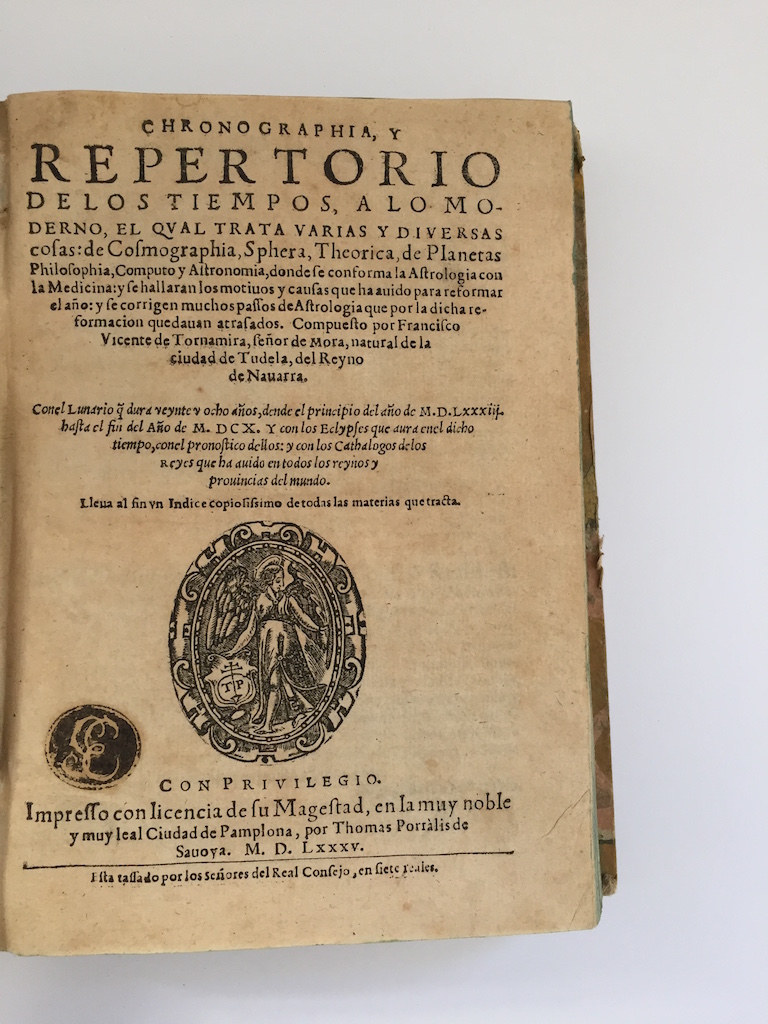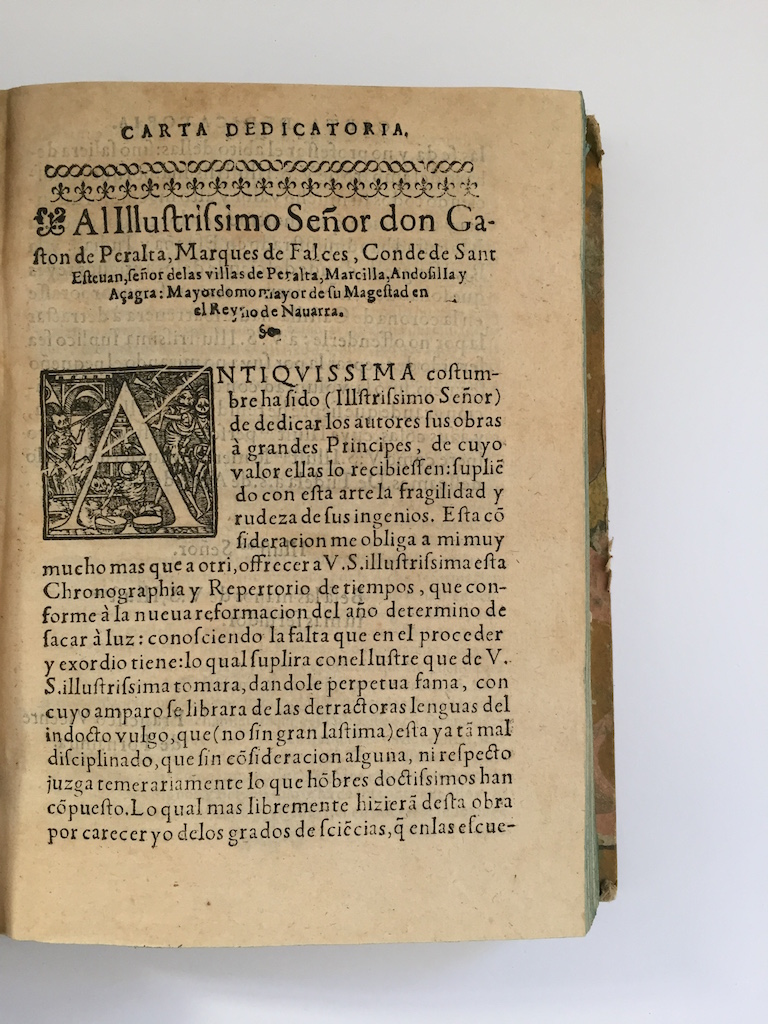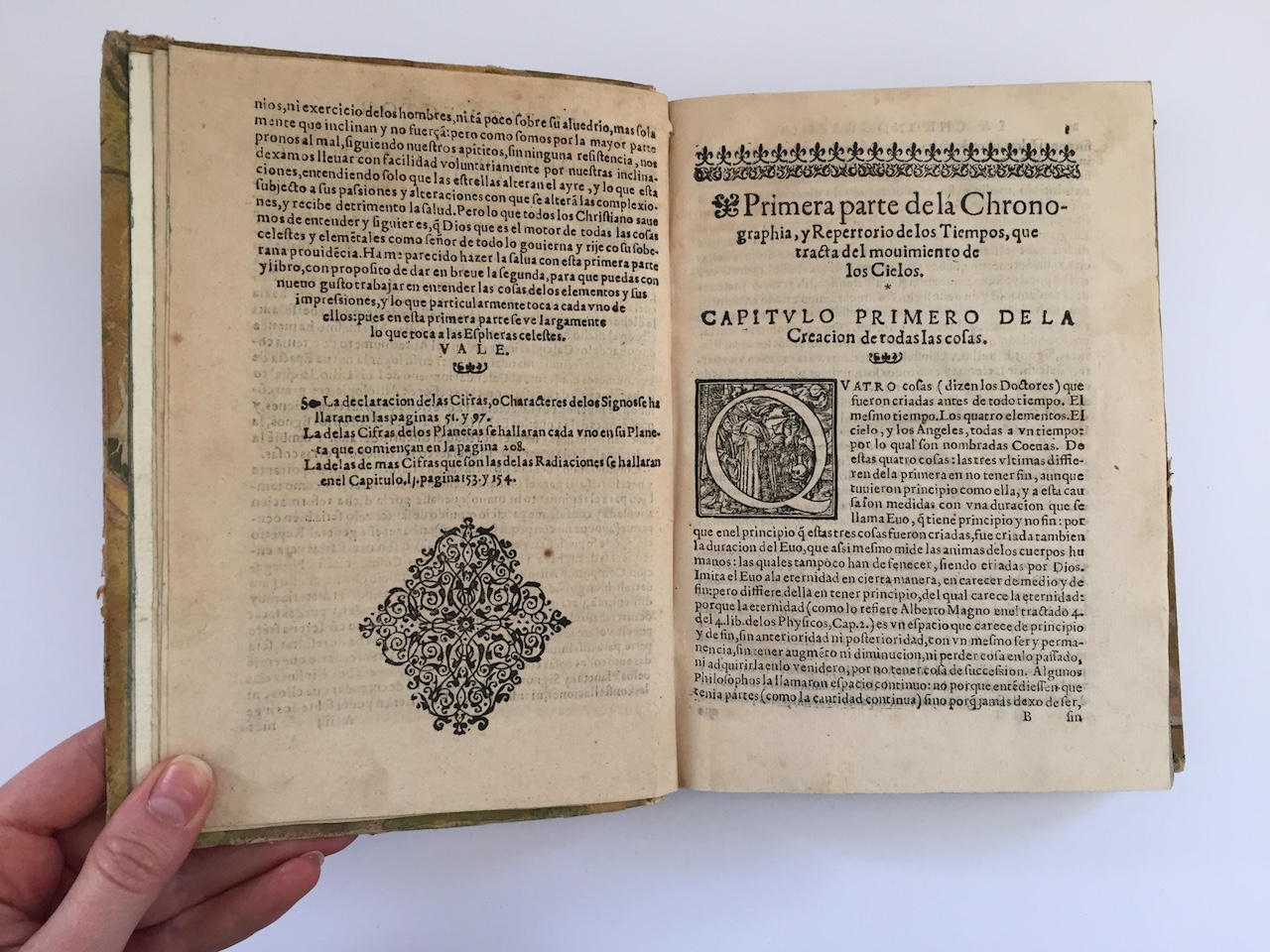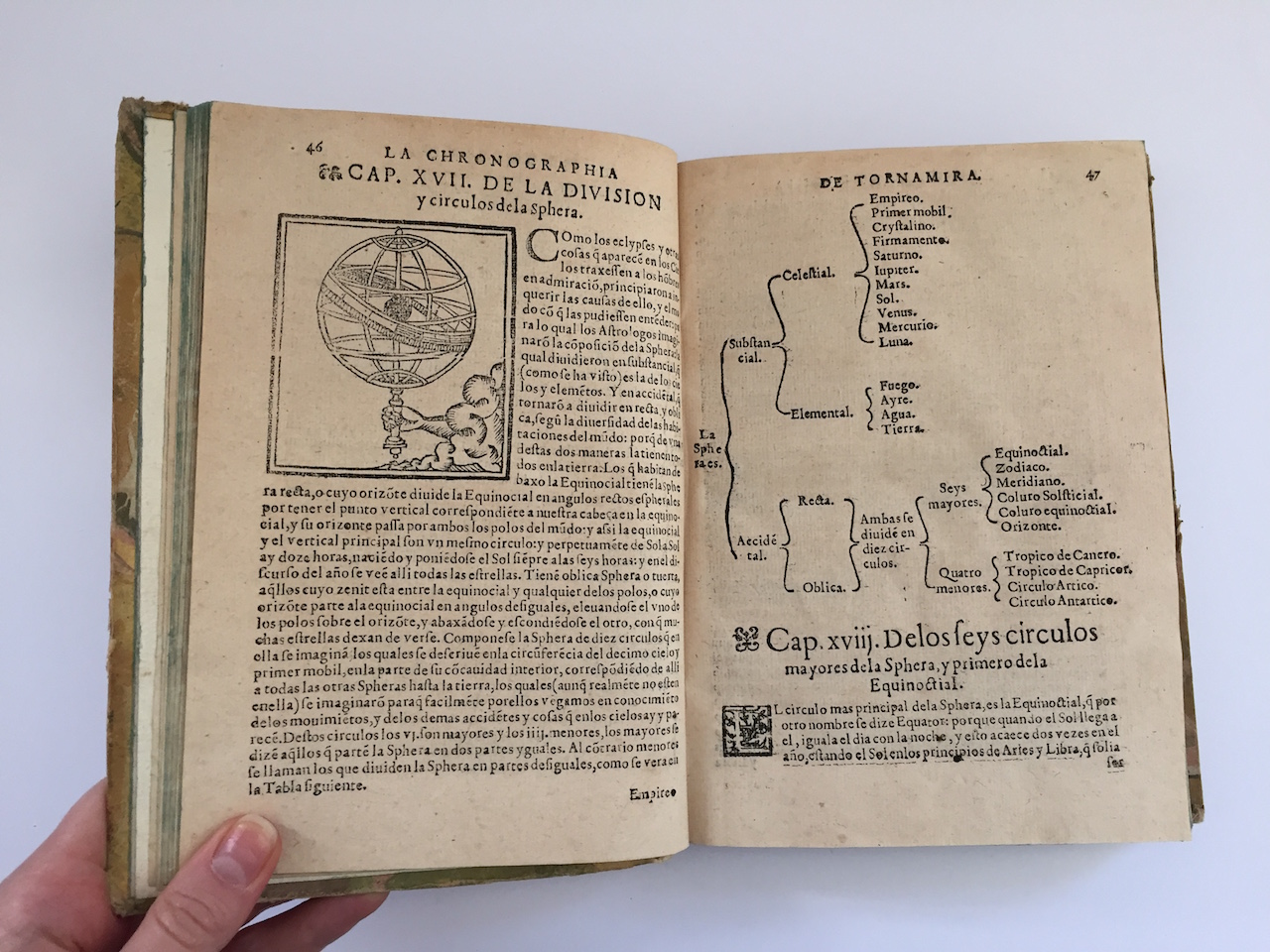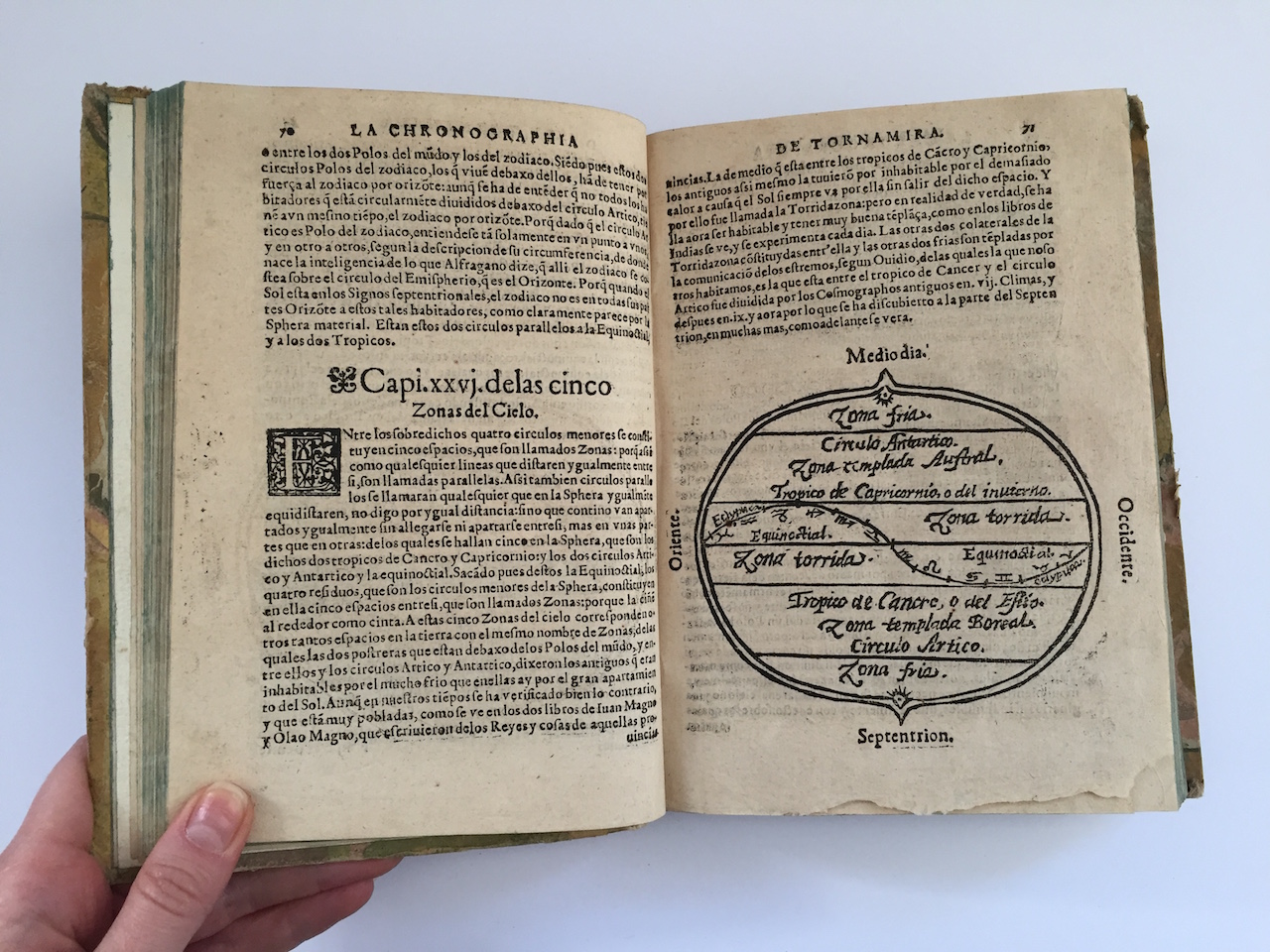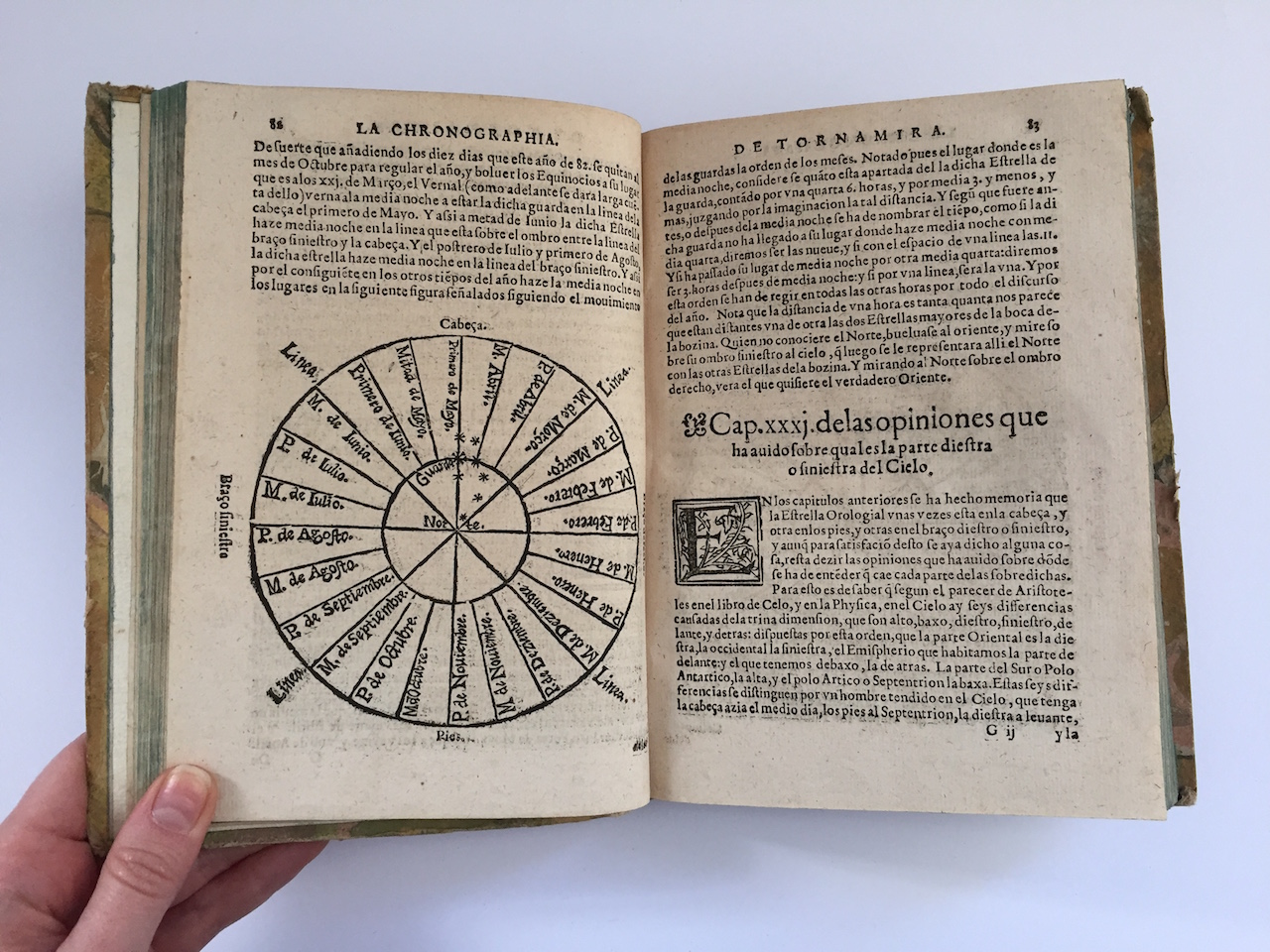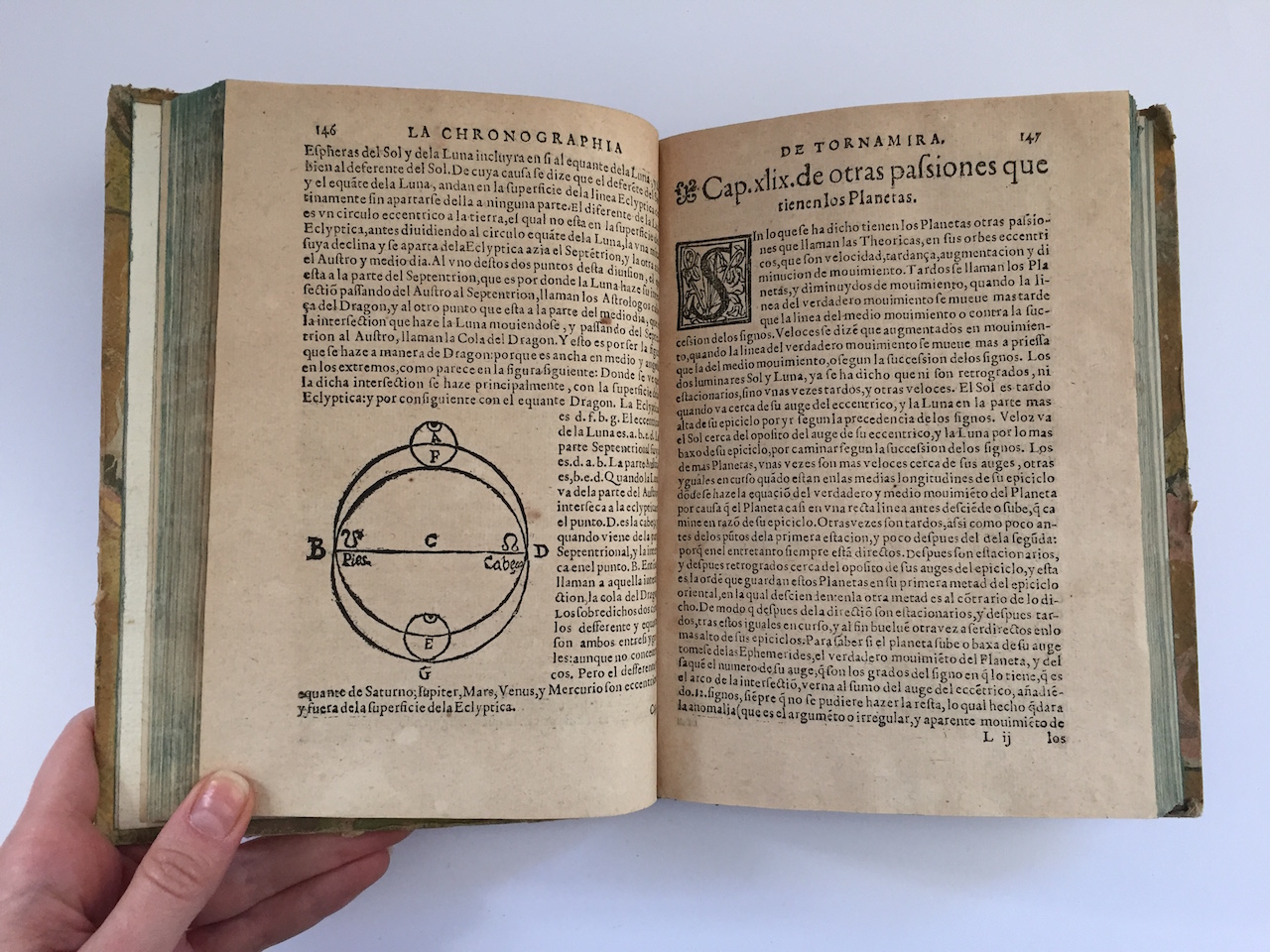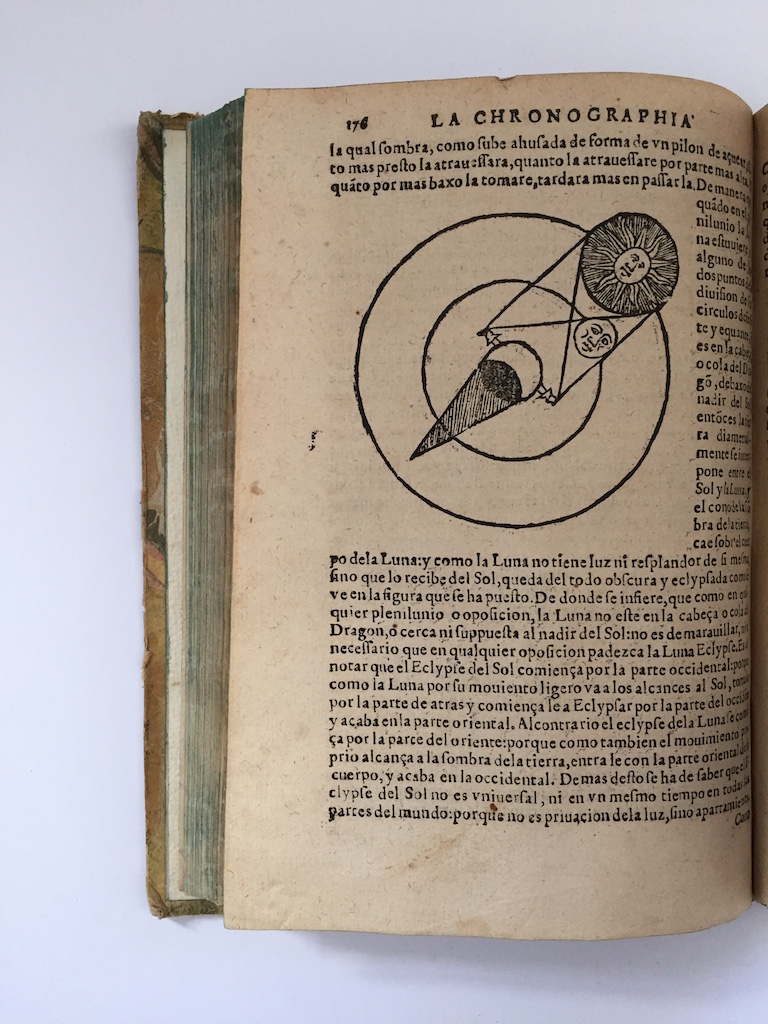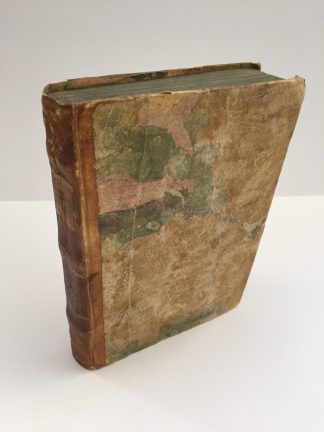TORNAMIRA, Francisco Vicente de
SPANISH INTERPRETATION OF THE NATURE OF THE UNIVERSE
Chronographia, y repertorio de los tiempos
Pamplona, Tomás Porralis, 1585£5,250.00
FIRST EDITION. 4to., pp. (8), 560, (8). Roman letter; printer’s device on title and final verso, foliated initials, first historiated ‘A’ with charming Dance Macabre, numerous large astronomical woodcut illustrations, tables and diagrams, original correction slip pasted at foot of p. 60; browned in places. A good copy in eighteenth-century half vellum stained to resemble calf, spine gilt in compartments, marbled boards and endpapers, all edges blue; early ‘SE’ ink stamp at foot of title.
Rare first edition of a wide-ranging astronomical, cosmographical and historical book, one of the first of its kind to be directly written in Spanish. Little is known of the life of Francisco Vicente de Tornamira (1534 – 1597), born in Tudela, Navarre. Chronographia was the most influential work of this prominent Spanish astronomer, illustrating in 162 chapters the creation of the universe, the various branches of philosophy, the movement of planets, the constellations and the Zodiac, the universal chronology realm by realm, a series of calendars, almanacs and weather forecasts. All the subjects were elucidated further with a large number of illustrations, including, most notably, a traditional depiction of the Armillary Sphere and other globes, the Astronomical Man and the Roman gods on their chariots representing the planets named after them.
A fervent supporter of Ptolemaic vision of the universe against the heliocentric theory, Tornamira comes up with convoluted explanations to bridge the gap between mathematical calculation and the traditional model of planetary movement. A most interesting part is devoted to the solar calendar and the recent reform introduced in 1582 by Pope Gregory XIII, discussing the exact days of the year in which Lent, Corpus Domini and Easter should be celebrated. Tornamira expanded on this topic in his subsequent work, the Spanish translation of the new Gregorian calendar (1591).
“On p. 40 there is a reference to the Magellan circumnavigation; on p. 497 a list of the midsummer’s days of the New World; on p. 538-539 locations of New World cities.” Alden 585/67.
Rare outside Spain. Only one recorded copy in the US (New York Public Library).Not in Brunet. BM STC Sp., 204; Adams, T 803; Graesse, VII, 174; Houzeau & Lancaster 2763; Palau 334501. Cantamessa III 8057.In stock


